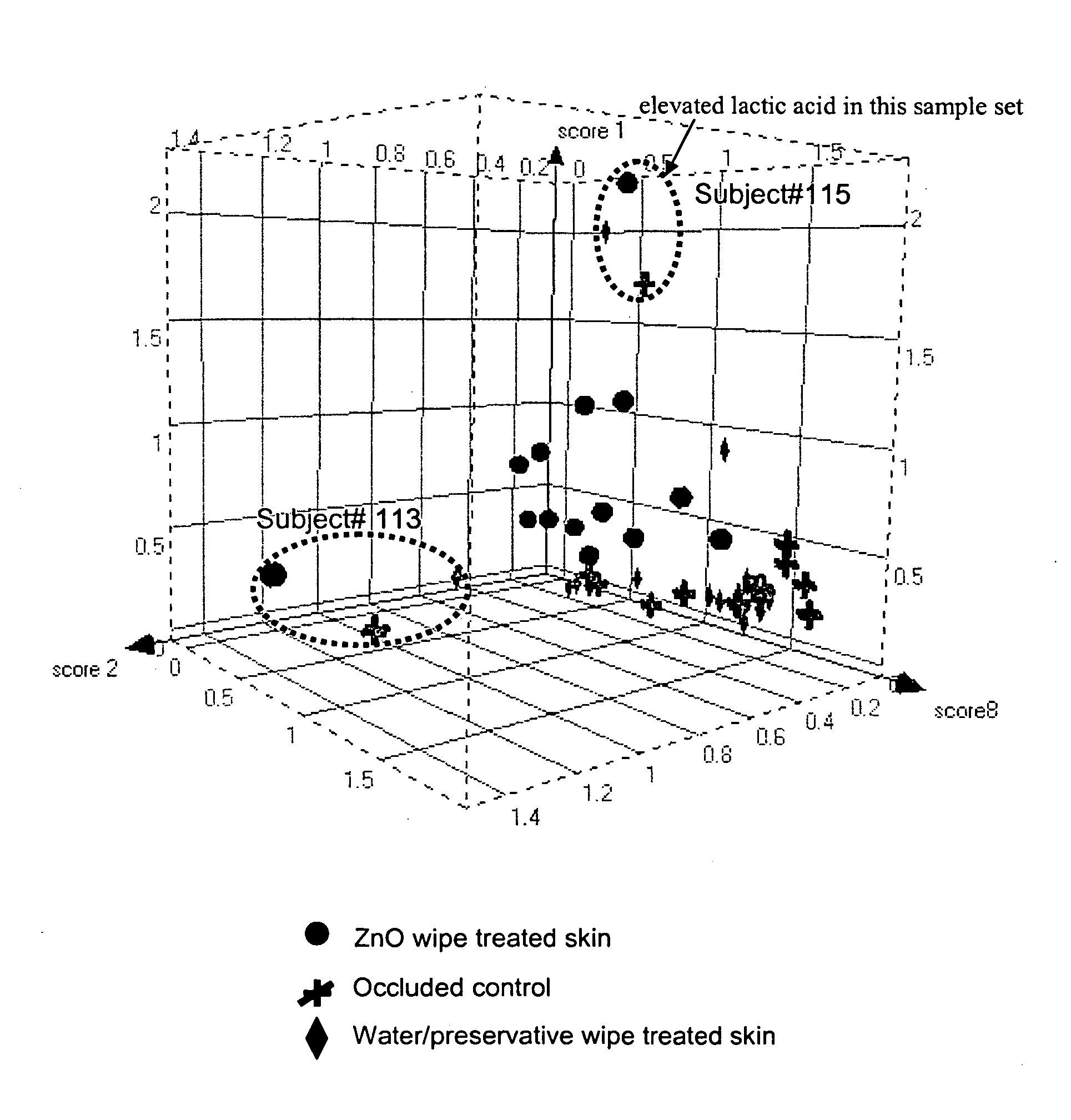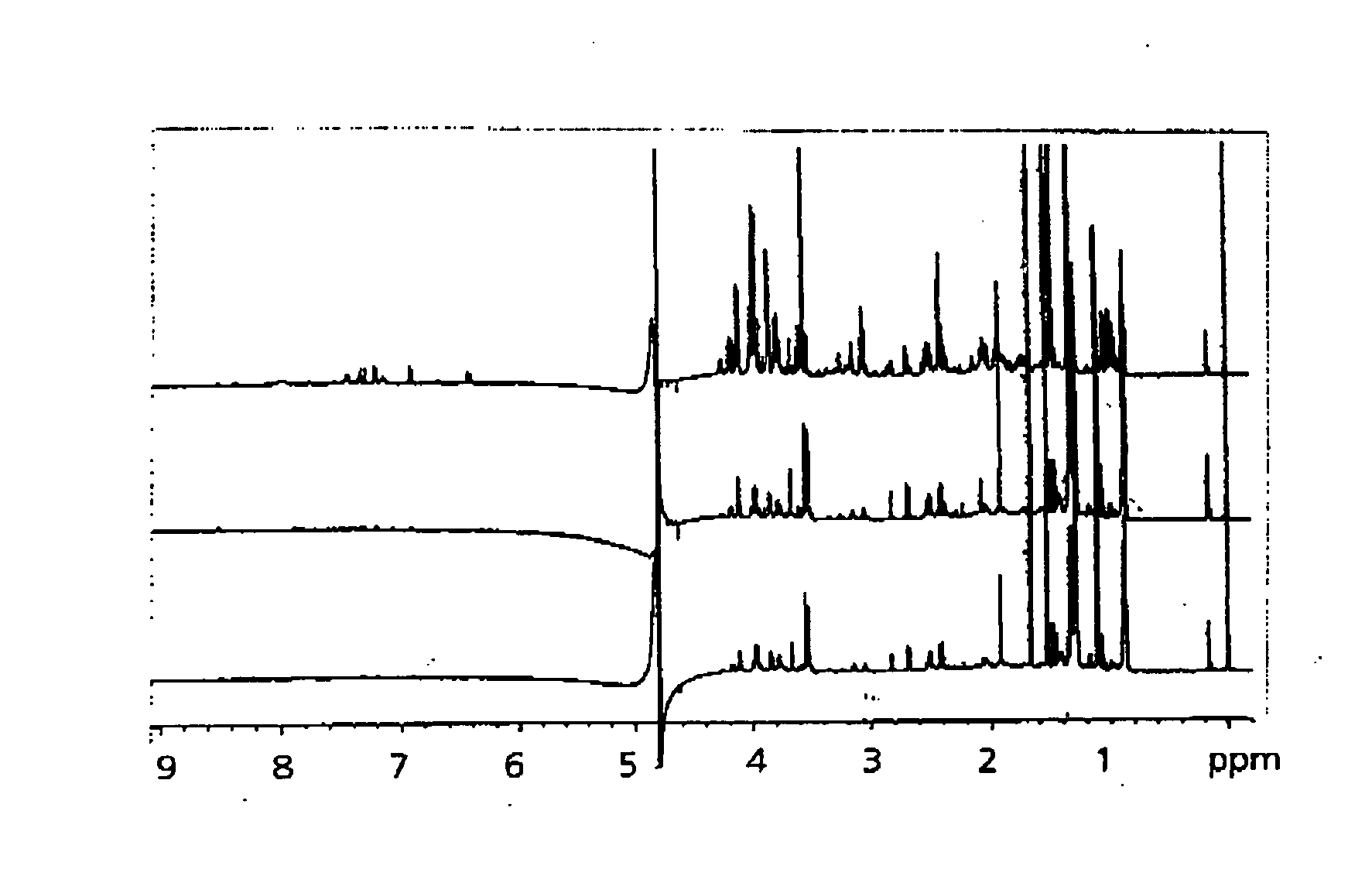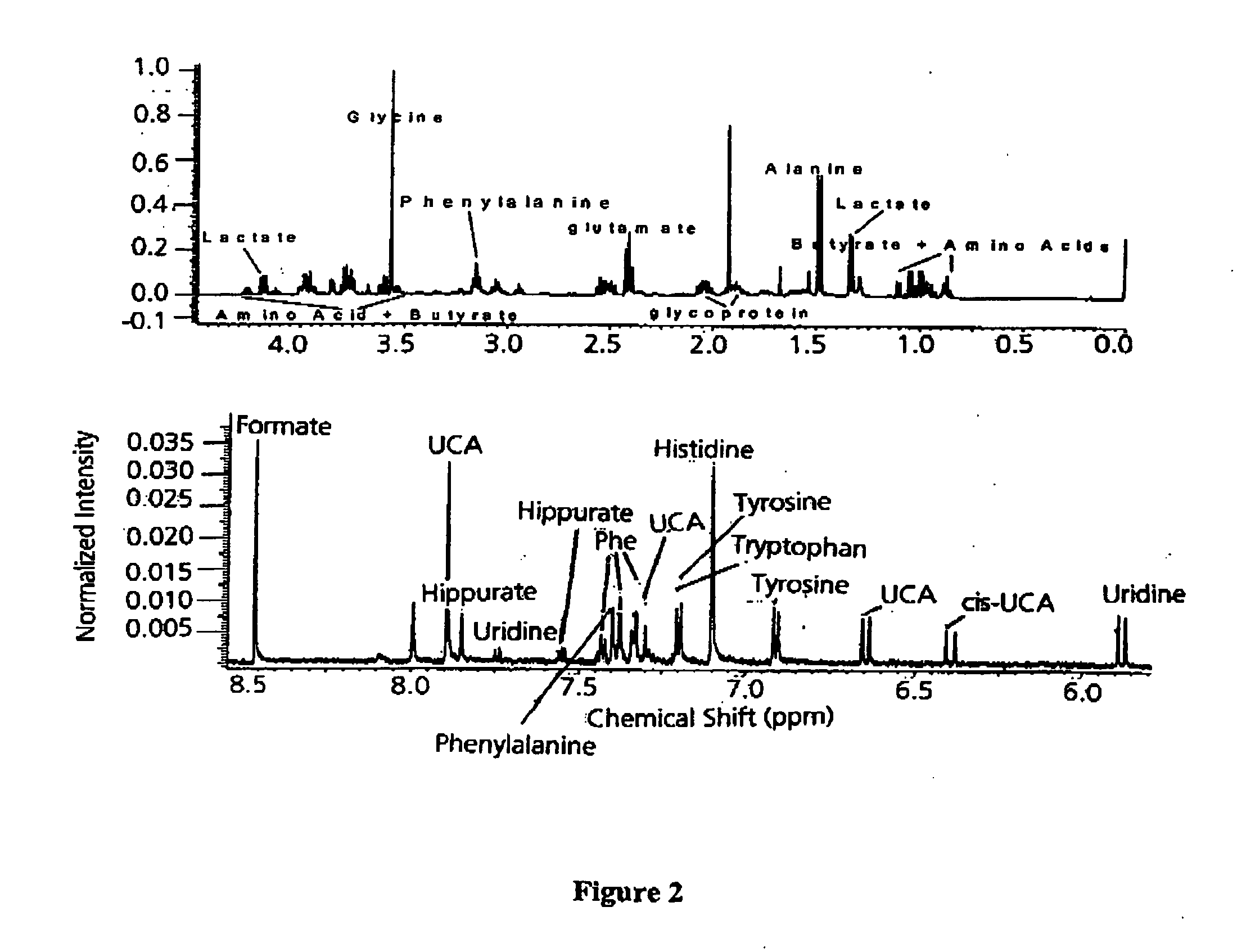Metabonomic methods to assess health of skin
a skin health and metabolite technology, applied in the field of skin health assessment, can solve the problems of dermatological responses, low and unpredictable frequency, and further hindered studies, and achieve the effect of increasing the level of metabolites and reducing variation
- Summary
- Abstract
- Description
- Claims
- Application Information
AI Technical Summary
Benefits of technology
Problems solved by technology
Method used
Image
Examples
example 1
Normal vs. Occluded Skin
[0060] Occlusion induced skin changes may not be easily or reproducibly evaluated by visual grading. Furthermore, the visual grading will not provide critical information needed in order to understand and predict skin responses to certain treatments and to create measures to maintain or promote skin health. Sensitive techniques with high resolving power are needed to analyze skin at the molecular level.
[0061] Skin samples were collected from a clinical study that was carried out on adult arms. Each arm had two of the three sites assigned to treatment with either a fully occlusive patch (Saran Wrap®) or a patch prepared from a breathable material (low MVTR (350) Hytrel film (E-90602-3M Hytrel 6108). The third site was a non-occluded control. Each patch site was patched for approximately 24 hrs with a 4×5 cm2 patch made of one of the test materials. Some sites were repatched for 2 additional 24 hr periods. Skin samples were collected by D-Squame™ tape strippi...
example 2
Identification of Skin Metabolites
[0062] Skin metabolites that respond to occlusion were identified using various approaches. Samples from occluded and control skin were collected from the same clinical study as described above in Example 1. Briefly, skin samples were collected from the clinical study that was carried out on adult arms. Each arm had two of the three sites assigned to treatment with either a fully occlusive patch (Saran Wrap®) or a patch prepared from a breathable material (low MVTR (350) Hytrel film (E-90602-3M Hytrel 6108). The third site was a non-occluded control. Each patch site was patched for about 24 hrs. Some sites were repatched for 2 additional 24 hr periods. Skin samples were collected by D-Squame tape stripping and stored at or below −20° C. until use.
[0063] The skin strips were extracted with water and then analyzed by LC / MS. Comparison of the MS data revealed a unique signal with m / z 139 whose intensity was elevated in occluded skin. Exact mass measu...
example 3
Sample Variation Effects on Metabolite Profiles
[0071] Metabolite variations among skin type, depth, site, and time from washing were assessed. Five different sites from an adult forearm were stripped once using D-Squame™ tapes one hour after washing. The same five sites were stripped again six hours after the first tape stripping. An additional set of samples was tape stripped consecutively ten times from a separate site for skin depth profile study. Skin depth samples were also collected from another individual. Each individual tape was immersed in 1 mL D2O and sonicated at 25° C. for 30 min. The solution was then transferred to a fresh vial and dried under nitrogen. The sample was then dissolved in 0.2 M pH 7.4 phosphate / D2O buffer and transferred to a 2 mm capillary tube capped with a Teflon™ fixture. The capillary tube was inserted into a NMR micro sample tube assembly (5 mm tube with 3 mm stem, from NewEra). Annular space was filled with D2O to provide locking during spectrome...
PUM
 Login to View More
Login to View More Abstract
Description
Claims
Application Information
 Login to View More
Login to View More - R&D
- Intellectual Property
- Life Sciences
- Materials
- Tech Scout
- Unparalleled Data Quality
- Higher Quality Content
- 60% Fewer Hallucinations
Browse by: Latest US Patents, China's latest patents, Technical Efficacy Thesaurus, Application Domain, Technology Topic, Popular Technical Reports.
© 2025 PatSnap. All rights reserved.Legal|Privacy policy|Modern Slavery Act Transparency Statement|Sitemap|About US| Contact US: help@patsnap.com



